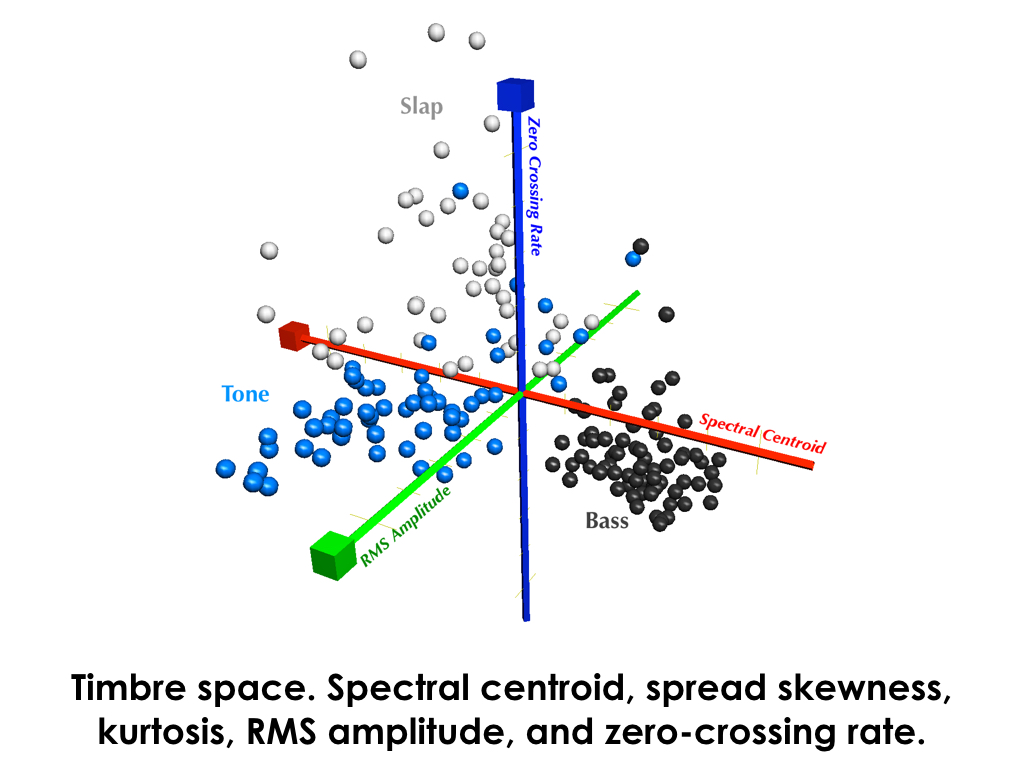

In order to do that I need a more precise definition of 'timbre', and this is the definition I have been using. So when the drum is struck I take 50 milliseconds of sound. I calculate these six feature on that sample; so the first four spectral moments, RMS amplitude, and zero-crossing rate. Then, each dot here is just one instance of the drum being struck, so every single stroke can be plotted in this timbre space. Prior to running any of my algorithms I collect a large number of samples so I can normalize the feature space, just by subtracting out the mean and dividing by the standard deviation for each feature. This is the canonical version of timbre that I use in my studies. At different times I also test other features, so I look at mel-frequency cepstral coefficients, and I also look at some temporal features like temporal centroid, but this sort of the canonic definition that I use throughout my dissertation.